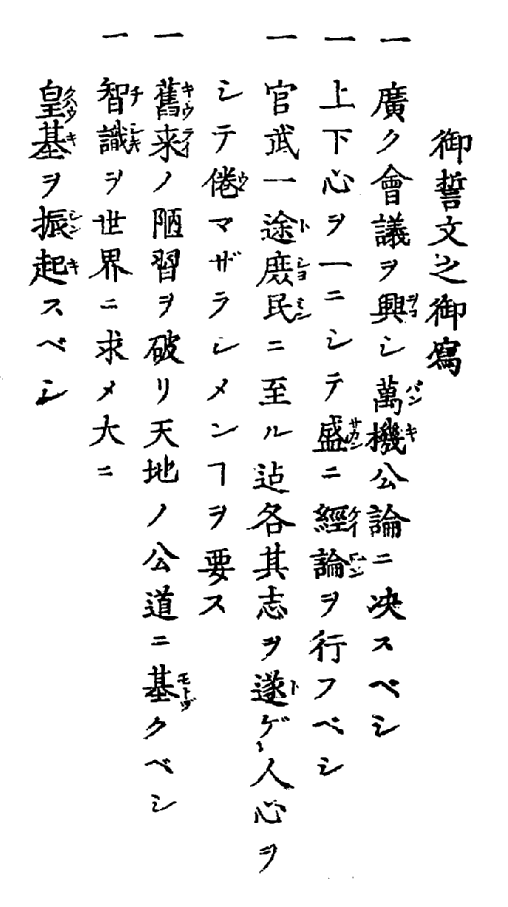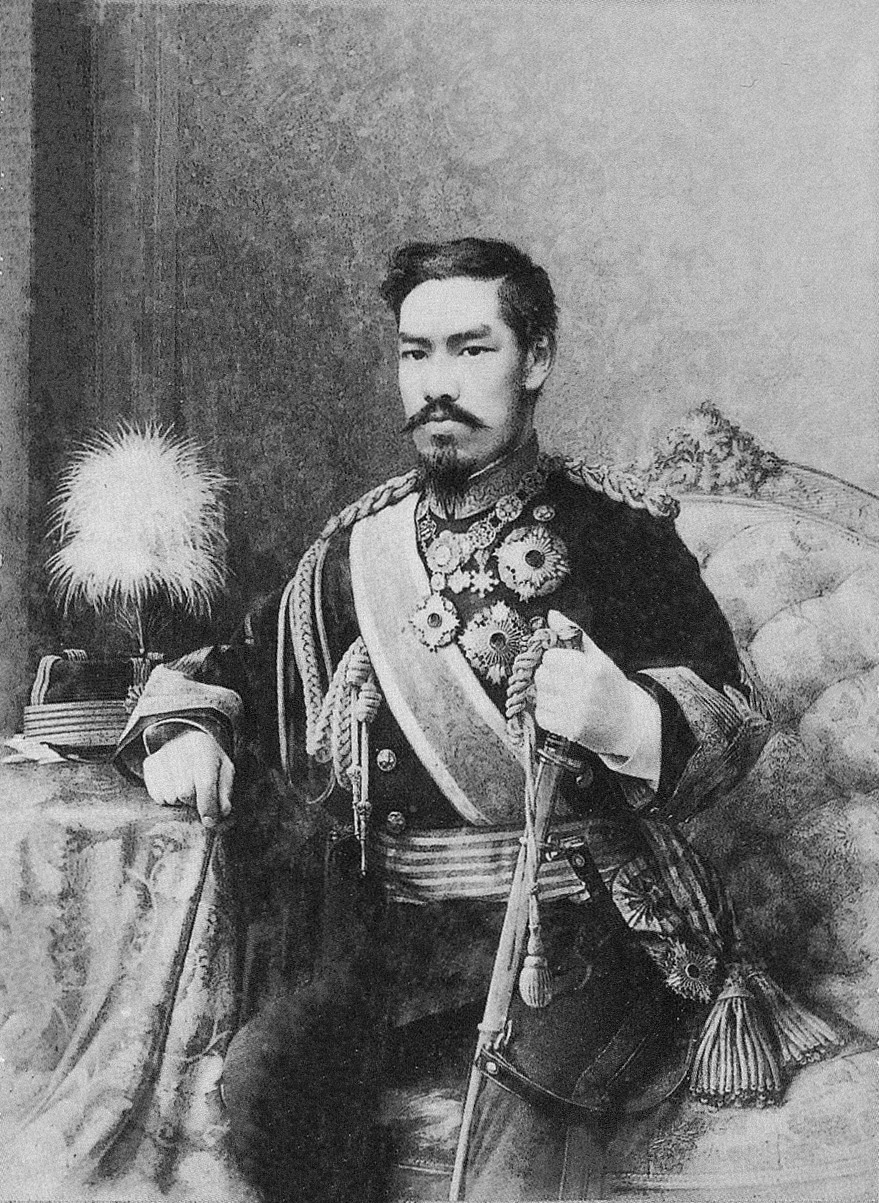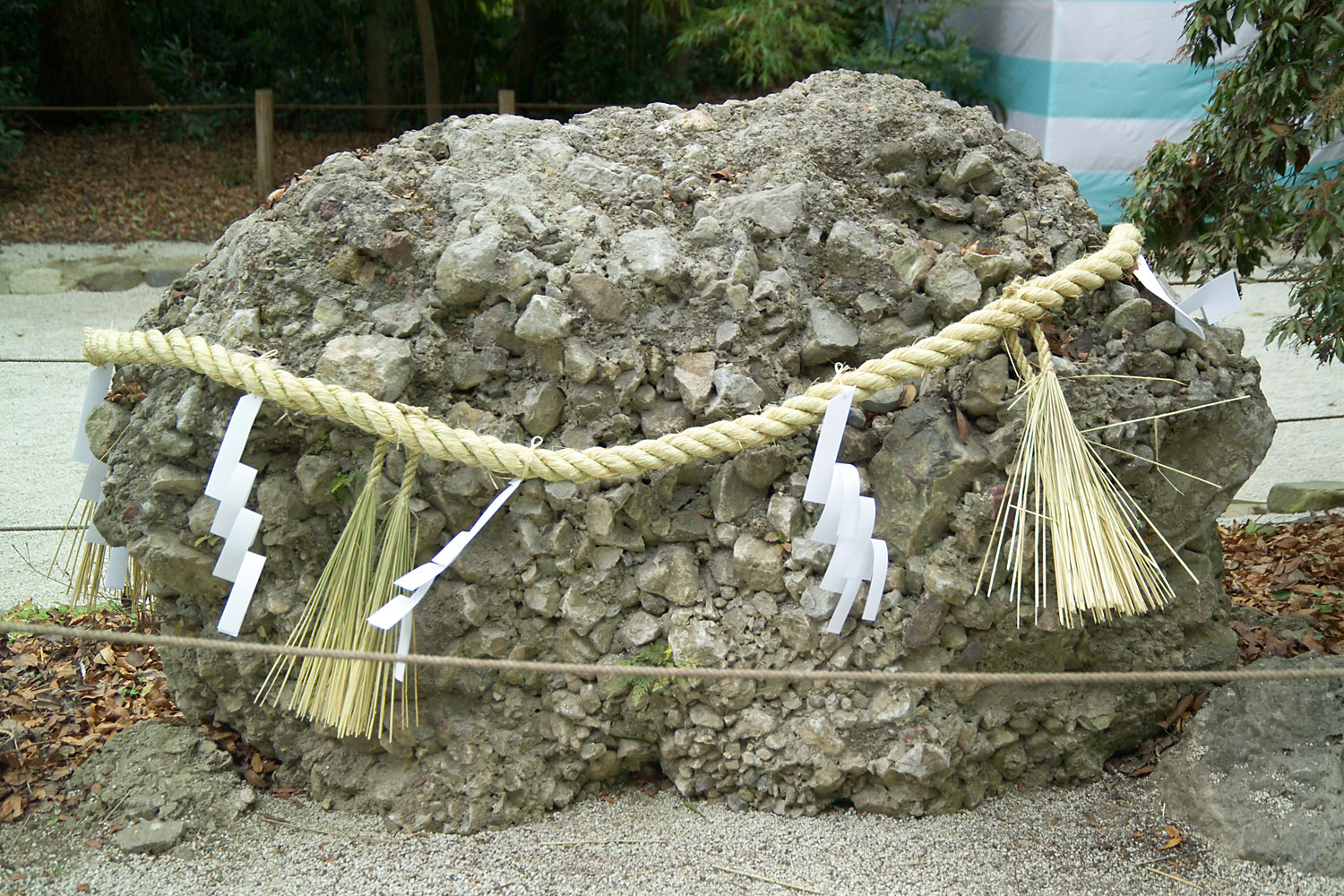|
Japanese Empire
The Empire of Japan, also known as the Japanese Empire or Imperial Japan, was the Japanese nation state that existed from the Meiji Restoration on January 3, 1868, until the Constitution of Japan took effect on May 3, 1947. From 1910 to 1945, it included the Japanese archipelago, the Kurils, Karafuto, Korea, and Taiwan. The South Seas Mandate and concessions such as the Kwantung Leased Territory were ''de jure'' not internal parts of the empire but dependent territories. In the closing stages of World War II, with Japan defeated alongside the rest of the Axis powers, the formalized surrender was issued on September 2, 1945, in compliance with the Potsdam Declaration of the Allies, and the empire's territory subsequently shrunk to cover only the Japanese archipelago resembling modern Japan. Under the slogans of "Enrich the Country, Strengthen the Armed Forces" and "Promote Industry" which followed the Boshin War and the restoration of power to the emperor from the ... [...More Info...] [...Related Items...] OR: [Wikipedia] [Google] [Baidu] |
Meiji Period
The was an era of Japanese history that extended from October 23, 1868, to July 30, 1912. The Meiji era was the first half of the Empire of Japan, when the Japanese people moved from being an isolated feudal society at risk of colonization by Western powers to the new paradigm of a modern, industrialized nation state and emergent great power, influenced by Western scientific, technological, philosophical, political, legal, and aesthetic ideas. As a result of such wholesale adoption of radically different ideas, the changes to Japan were profound, and affected its social structure, internal politics, economy, military, and foreign relations. The period corresponded to the reign of Emperor Meiji. It was preceded by the Keiō era and was succeeded by the Taishō era, upon the accession of Emperor Taishō. The rapid modernization during the Meiji era was not without its opponents, as the rapid changes to society caused many disaffected traditionalists from the former samu ... [...More Info...] [...Related Items...] OR: [Wikipedia] [Google] [Baidu] |
Korea Under Japanese Rule
From 1910 to 1945, Korea was ruled by the Empire of Japan under the name Chōsen (), the Japanese reading of "Joseon". Japan first took Korea into its sphere of influence during the late 1800s. Both Korea (Joseon) and Japan had been under policies of isolationism, with Joseon being a Tributary system of China, tributary state of Qing China. However, in 1854, Perry Expedition, Japan was forcibly opened by the United States. It then rapidly modernized under the Meiji Restoration, while Joseon continued to resist foreign attempts to open it up. Japan eventually succeeded in opening Joseon with the unequal Japan–Korea Treaty of 1876. Afterwards, Japan embarked on a decades-long process of defeating its local rivals, securing alliances with Western powers, and asserting its influence in Korea. Japan Assassination of Empress Myeongseong, assassinated the defiant Korean queen and intervened in the Donghak Peasant Revolution.Donald Keene, ''Emperor of Japan: Meiji and his World, 1852� ... [...More Info...] [...Related Items...] OR: [Wikipedia] [Google] [Baidu] |
Tokyo
Tokyo, officially the Tokyo Metropolis, is the capital of Japan, capital and List of cities in Japan, most populous city in Japan. With a population of over 14 million in the city proper in 2023, it is List of largest cities, one of the most populous urban areas in the world. The Greater Tokyo Area, which includes Tokyo and parts of six neighboring Prefectures of Japan, prefectures, is the most populous metropolitan area in the world, with 41 million residents . Lying at the head of Tokyo Bay, Tokyo is part of the Kantō region, on the central coast of Honshu, Japan's largest island. It is Japan's economic center and the seat of the Government of Japan, Japanese government and the Emperor of Japan. The Tokyo Metropolitan Government administers Tokyo's central Special wards of Tokyo, 23 special wards, which formerly made up Tokyo City; various commuter towns and suburbs in Western Tokyo, its western area; and two outlying island chains, the Tokyo Islands. Although most of the w ... [...More Info...] [...Related Items...] OR: [Wikipedia] [Google] [Baidu] |
Tokyo City
was a Cities of Japan, municipality in Japan and capital of Tokyo Prefecture (1868–1943), Tokyo Prefecture (or ''Tokyo-fu'') which existed from 1 May 1889 until the establishment of Tokyo Metropolis on 1 July 1943. The historical boundaries of Tokyo City are now occupied by the Special wards of Tokyo, special wards of Tokyo. The defunct city and its prefecture became what is now Tokyo, also known as the Tokyo Metropolis or, ambiguously, Tokyo Prefecture. History In 1868, the city of Edo, seat of the Tokugawa shogunate, Tokugawa government, was renamed Tokyo, and the offices of Tokyo Prefecture (''-fu'') were opened. The extent of Tokyo Prefecture was initially limited to the former Edo city, but rapidly augmented to be comparable with the present Tokyo Metropolis. In 1878, the Meiji government's reorganization of local governments subdivided prefectures into Counties of Japan, counties or districts (''gun'', further subdivided into Towns of Japan, towns and Villages of J ... [...More Info...] [...Related Items...] OR: [Wikipedia] [Google] [Baidu] |
Kyoto
Kyoto ( or ; Japanese language, Japanese: , ''Kyōto'' ), officially , is the capital city of Kyoto Prefecture in the Kansai region of Japan's largest and most populous island of Honshu. , the city had a population of 1.46 million, making it the List of cities in Japan, ninth-most populous city in Japan. More than half (56.8%) of Kyoto Prefecture's population resides in the city. The city is the cultural anchor of the substantially larger Greater Kyoto, a metropolitan statistical area (MSA) home to a census-estimated 3.8 million people. It is also part of the even larger Keihanshin, Keihanshin metropolitan area, along with Osaka and Kobe. Kyoto is one of the oldest municipalities in Japan, having been chosen in 794 as the new seat of Japan's imperial court by Emperor Kanmu. The original city, named Heian-kyō, was arranged in accordance with traditional Chinese feng shui following the model of the ancient Chinese capitals of Chang'an and Luoyang. The emperors of Japan ruled fro ... [...More Info...] [...Related Items...] OR: [Wikipedia] [Google] [Baidu] |
Charter Oath
The was promulgated on 6 April 1868 in Kyoto Imperial Palace. The Oath outlined the main aims and the course of action to be followed during Emperor Meiji's reign, setting the legal stage for Japan's modernization. This also set up a process of urbanization as people of all classes were free to move jobs so people went to the city for better work. It remained influential, though less for governing than inspiring, throughout the Meiji era and into the twentieth century, and it can be considered the first constitution of modern Japan. Rules As the name implies, the text of the Oath consists of five clauses: Origin and subsequent influence The first draft of the Oath was written by junior councilor Yuri Kimimasa in January 1868, containing progressive language that spoke to the frustrations that the radical but modestly born Meiji leaders had experienced in "service to hereditary incompetents".Jansen (2002), p. 338. Yuri's language was moderated by his colleague Fukuoka Takachi ... [...More Info...] [...Related Items...] OR: [Wikipedia] [Google] [Baidu] |
Meiji Era
The was an Japanese era name, era of History of Japan, Japanese history that extended from October 23, 1868, to July 30, 1912. The Meiji era was the first half of the Empire of Japan, when the Japanese people moved from being an isolated feudalism, feudal society at risk of colonization by Western world, Western powers to the new paradigm of a modern, industrialized nation state and emergent great power, influenced by Western scientific, technological, philosophical, political, legal, and aesthetic ideas. As a result of such wholesale adoption of radically different ideas, the changes to Japan were profound, and affected its social structure, internal politics, economy, military, and foreign relations. The period corresponded to the reign of Emperor Meiji. It was preceded by the Keiō era and was succeeded by the Taishō era, upon the accession of Emperor Taishō. The rapid modernization during the Meiji era was not without its opponents, as the rapid changes to society cause ... [...More Info...] [...Related Items...] OR: [Wikipedia] [Google] [Baidu] |
Kimi Ga Yo 1930
Kimi may refer to: People * Andrea Kimi Antonelli (born 2006), Italian Formula One driver * Kimi Djabate (born 1975), Bissau-Guinean Afro-beat/blues musician * Kimi Katkar (born 1965), Indian Bollywood actress and model * Kimi Koivisto (born 1992), Finnish ice hockey player *, Japanese politician * Kimi Räikkönen (born 1979), Finnish Formula One driver and 2007 Formula One world champion *, Japanese classical composer * Kimi Verma Kimi Verma (born 20 November 1977) is an Indian-American actress and fashion designer who predominantly works in Punjabi language, Punjabi films. Early life Kimi was born in Punjab, India, Punjab on November 20, 1977, then later moved to the cit ... (born 1977), Indian actress Kirandeep Verma *, Japanese women's basketball player Arts and entertainment * Kimi Records, an Icelandic independent record label and distribution company * Kimi (record label), a Japanese record label founded in 1990 * ''Kimi'' (film), an American thriller film ... [...More Info...] [...Related Items...] OR: [Wikipedia] [Google] [Baidu] |
Kimigayo
is the national anthem of Japan. The lyrics are from a ' poem written by an unnamed author in the Heian period (794–1185), and the current melody was chosen in 1880, replacing an unpopular melody composed by John William Fenton in 1869. While the title "Kimigayo" is usually translated as "His Imperial Majesty's Reign,” no official translation of the title or lyrics have been established in law. From 1888 to 1945, ''Kimigayo'' served as the national anthem of the Empire of Japan. When the Empire accepted the Potsdam Declaration and came under Occupation of Japan, Allied occupation, Hirohito, Emperor Shōwa retained the throne, and ''Kimigayo'' remained the de facto national anthem to preserve the Emperor of Japan, Japanese monarchy. The passage of the Act on the National Flag and Anthem in 1999 officially recognized it as both the national and imperial anthem. Etymology "''Kimi''" has been used to indicate the Emperor of Japan or one's lord (i.e., master) since at leas ... [...More Info...] [...Related Items...] OR: [Wikipedia] [Google] [Baidu] |
List Of Territories Occupied By Imperial Japan
This is a list of regions occupied or annexed by the Empire of Japan until 1945, the year of the end of World War II in Asia, after the surrender of Japan. Control over all territories except most of the Japanese mainland (Hokkaido, Honshu, Kyushu, Shikoku, and some 6,000 small surrounding islands) was renounced by Japan in the Surrender of Japan, unconditional surrender after World War II and the Treaty of San Francisco. A number of territories occupied by the United States after 1945 were returned to Japan, but there are still a number of Territorial disputes of Japan, disputed territories between Japan and Russia (the Kuril Islands dispute), South Korea and North Korea (the Liancourt Rocks dispute), the People's Republic of China and Taiwan (the Senkaku Islands dispute). Pre-WWI Colonies *Taiwan under Japanese rule, Taiwan and the Penghu Islands – 1895–1945 *Karafuto – 1905–1943 *Kwantung Leased Territory, Kantō – 1905–1945 *Korea under Japanese rule, Chōsen � ... [...More Info...] [...Related Items...] OR: [Wikipedia] [Google] [Baidu] |
Protectorate
A protectorate, in the context of international relations, is a State (polity), state that is under protection by another state for defence against aggression and other violations of law. It is a dependent territory that enjoys autonomy over most of its internal affairs, while still recognizing the suzerainty of a more powerful sovereign state without being a possession. In exchange, the protectorate usually accepts specified obligations depending on the terms of their arrangement. Usually protectorates are established de jure by a treaty. Under certain conditions—as with History of Egypt under the British#Veiled Protectorate (1882–1913), Egypt under British rule (1882–1914)—a state can also be labelled as a de facto protectorate or a veiled protectorate. A protectorate is different from a colony as it has local rulers, is not directly possessed, and rarely experiences colonization by the suzerain state. A state that is under the protection of another state while retai ... [...More Info...] [...Related Items...] OR: [Wikipedia] [Google] [Baidu] |
Puppet State
A puppet state, puppet régime, puppet government or dummy government is a State (polity), state that is ''de jure'' independent but ''de facto'' completely dependent upon an outside Power (international relations), power and subject to its orders.Compare: Puppet states have nominal Sovereign state, sovereignty, except that a foreign power effectively exercises control through economic or military support. By leaving a local government in existence the outside power evades all responsibility, while at the same time successfully paralysing the local government they tolerate. Puppet states differ from Alliance, allies, who choose their actions of their own initiative or in accordance with Treaty, treaties they have voluntarily entered. Puppet states are forced into Rubber stamp (politics), legally endorsing actions already taken by a foreign power. Characteristics Puppet states are "endowed with the outward symbols of authority", such as a name, National flag, flag, anthem, cons ... [...More Info...] [...Related Items...] OR: [Wikipedia] [Google] [Baidu] |








